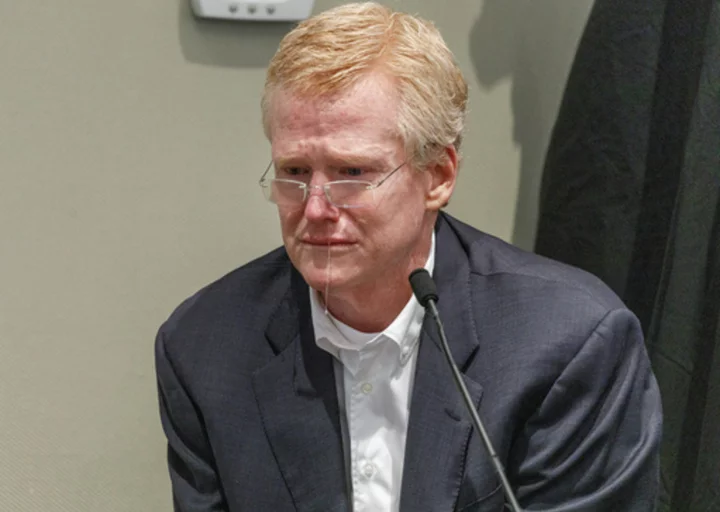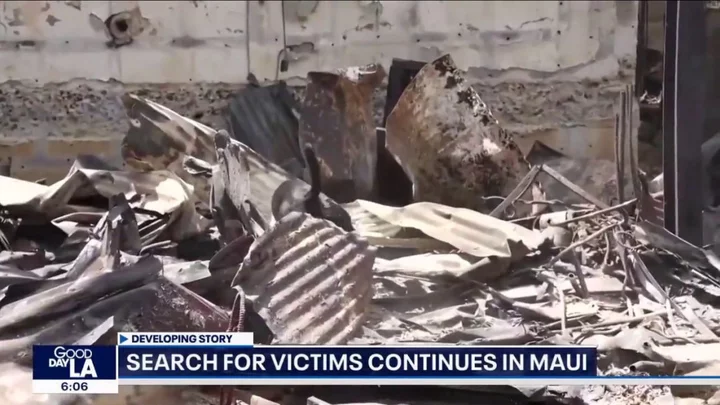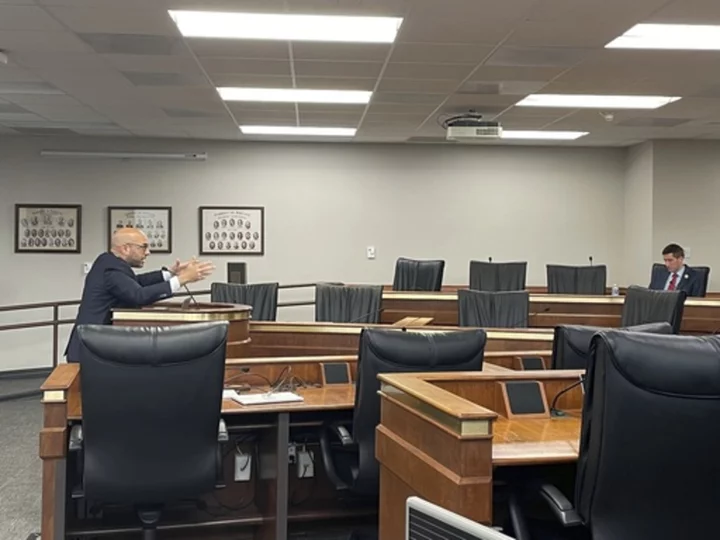Biden administration officials are doubling down on efforts to stem the flow of migrants journeying to the US-Mexico border, capitalizing on nearly a month of low border crossings in the wake of the lifting of a Covid-era restriction.
The handling of the US southern border has dogged President Joe Biden over the course of his presidency, starting with an influx of unaccompanied migrant children just weeks into his administration and followed by thousands of primarily Haitian migrants who gathered under a bridge along the Texas-Mexico border.
It's a political vulnerability for Biden, as the 2024 presidential election kicks into gear and Republican presidential candidates attack his border policies on the campaign trail. House Republicans are also making the issue a centerpiece, as they push forward with potential impeachment proceedings of Homeland Security Secretary Alejandro Mayorkas.
Last month, officials braced for another surge following the expiration of a public health order, known as Title 42, that allowed authorities to swiftly turn away certain migrants during the coronavirus pandemic. Biden warned it could be "chaotic for a while."
Instead, border crossings dropped, leading to a collective sigh of relief among officials.
Shifting migration patterns in the Western Hemisphere have posed an immense challenge for the Biden administration amid an increase of people from multiple nations fleeing deteriorating conditions in their home countries that were exacerbated by the coronavirus pandemic. And officials caution crossings can spike again.
But in the meantime, the Biden administration is taking the unprecedented step of standing up centers in the hemisphere that would allow migrants to apply and be screened for programs to legally migrate to the US, among other countries.
"When we're dealing with a surge, it just makes it hard for us to be proactive. We have to be more reactionary, so this certainly gives us more space," a senior administration official told CNN, conceding some surprise by the significant drop in encounters.
Since May 12, US Border Patrol has averaged around 3,400 daily encounters, according to the Department of Homeland Security, a marked shift from the around 10,000 daily encounters days before Title 42 lifting.
Over the last month, officials have focused on setting up processing centers in the region where migrants can be screened for immigrant programs and visas to legally migrate to the US, and eventually, Spain or Canada. Last week, the White House sent a high-level delegation to Guatemala, where officials met with President Alejandro Giammattei and senior Guatemalan officials to discuss migration.
The processing centers, which were part of the actions the US and Guatemala committed to, were announced earlier this year, but were not yet operational, garnering criticism from allies and advocates who questioned why it had not been done sooner.
In the coming days, those centers will start taking migrants, beginning in Guatemala and later Colombia -- two countries that migrants often pass through on their way to the US-Mexico border.
Up to eight brick and mortar centers will be prepared to screen migrants in Guatemala, as well as eight centers in Colombia, according to a senior administration official.
"We want to do this in a conservative way, where we test it, make sure it's working before we expand," the official said.
The State Department and DHS plan to open about 100 centers.
The buildings already exist and will be staffed with by personnel from the United Nations refugee agency and International Organization for Migration who will screen migrants and refer those eligible for certain programs to US Citizenship and Immigration Services. Migrants will receive appointments after applying online.
The centers underscore the administration's approach of setting up additional ways for people to legally migrate to the US, while making clear that consequences will be levied against those who don't take advantage of those pathways. It's also the outcome of a multi-country agreement struck between the US and countries in the Western Hemisphere last year during the Summit of the Americas.
The current low numbers on the border come despite warnings from officials that the expiration of Title 42 could have attracted a surge of migrants and worsened an already challenging humanitarian crisis at the southern border. Those warnings led to thousands of federal personnel being sent to the southern border and US cities scrambling to prepare, for what has ultimately been a narrower influx of migrants than expected.
"As a result of planning and execution -- which combined stiffer consequences for unlawful entry with a historic expansion of lawful pathways and processes -- unlawful entries between ports of entry along the Southwest Border have decreased by more than 70% since May 11," the department said this week.
Administration officials have also repeatedly cited a mobile app for migrants to apply to turn themselves into US Customs and Border Protection, as well as programs that allow certain migrants to apply to lawfully migrate to enter the US as among the factors contributing to a drop in encounters. Still, officials caution migration flows can change.
"We will remain vigilant and continue to execute our plan, making adjustments where needed," the Department of Homeland Security said.









